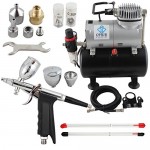With the fishing season being just around the corner, fishermen anxiously prepare their fishing tackle boxes with all the essentials they might need on their fishing adventures. And for that matter, good planning is a must! Your fishing gear has to be in full shine, cleaned and ready to help you achieve your fishing goals.
Whether you are a newbie or already a professional in fishing, choosing fishing tackle that is proper for attracting the type of fish you have set your heart on, can make or break the whole experience. The right reel and rod can make all the difference between a crappy and enjoyable fishing. You need to choose the right combo that will enable you to target the fish you are pursuing.

When targeting smaller fish, such as trout, what you want is a rod that matches that particular style of fishing. This means you want a smaller-size rod, that has a small diameter and is flexible. If you are pursuing larger fish, salmon and cat for example, what you want is a sturdier rod which will enable you to land the fish once you do catch it.
The next thing you need is the right reel. It should match the size of the rod (small, medium or large) and it has to be very well balanced. If you were to put, let’s say a wrong size reel, it would be awkward. So pay attention to the size of the reel for a more enjoyable and productive fishing. Most manufacturers today put the rod & reel combos for you so choosing fishing tackle that’s right for your style of fishing and the fish you target is a piece of cake.
Other important pieces of fishing gear are lines, hooks and of course, baits. There are so many different hook styles available, it’s pretty hard to choose the right one. The best thing is to match the hook with the type of fish you are targeting. Or stick with 3 common types: the flipping hook, the round bend and the extra wide gap.
Select the fishing line with your application. You can choose between braided (very fine and very strong), monofilament (the most basic line; good for every type of fishing) and fluoracarbon fishing line (the most popular type, very strong, and is transparent in water). Lures come in different colours that spin around in the water and leave the impression as if a creature is rolling in the water like a fish. You should have more of these in a fishing tackle box, one for each fish caught.
When choosing fishing tackle, make sure you get decent floats, hooks, sinkers and baits. Floats and sinkers have a similar role – they help you suspense the line to the desired depth. Hooks and baits have a similar role as well – attaching the fish. What you choose depends on the type of fish you plan on catching.

Choosing fishing tackle that is right for your style of fishing is important and so is maintenance and proper and regular care. Here are few tips.
- Every time you fish in salt water make sure you rinse off your tackle with fresh water right after you are done. This is very important as salt water can corrode metal really fast. When cleaning the reels make sure not to use too strong streams of water because this can drive the salt even deeper and corrode the inside faster. If a reel is significantly exposed to salt water and is not properly rinsed afterwards, chances are it is not going to work after that.
- When fishing in freshwaters, you do not have to rinse everything off, unless the water is too dirty. Nevertheless, make sure not to put wet lures in your tackle box, better leave it open to dry. If you do this, although not as fast as in salt water, hooks and other metal parts are bound to rust.
- Stop using those re-used hooks right away! Yes, simply stop sharpening them after you have used them a couple of times and throw them away. Today high-quality hooks are laser and chemically sharpened. Therefore, once you notice a few specks of rust, no matter how long you go at it with a stone or file, the hook is never going to be as sharp as it was the first time you used it.


